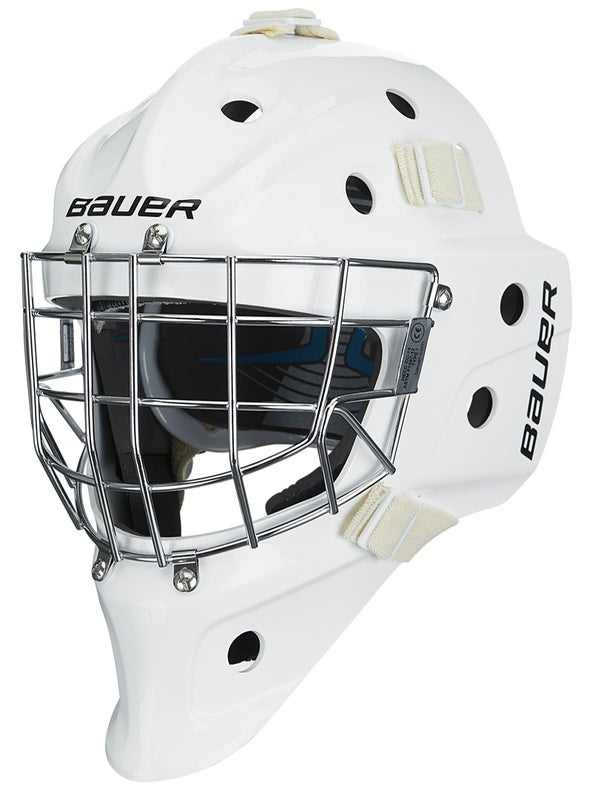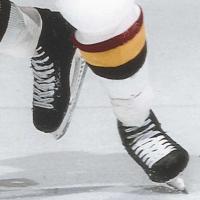-
Content Count
2778 -
Joined
-
Last visited
-
Days Won
87 -
Feedback
0%
Posts posted by flip12
-
-
1 hour ago, Miller55 said:Didn't realize they had it on my Bauer and pshs
Only in the Praux Custom option, from what I could see, but they had it there. It’s the Kane I’m looking at, and looking again, it looks like it might have some of his mods to the stock Shanahan. PSHS’ Kane looks like a stock Shanny. I have nothing against Base. I just got a Hossa Pro blade from them.
-
17 minutes ago, Miller55 said:Where's that? Unless you're referring to Base hockey, in which case... Yeah
MyBauer, Prostockhockeysticks, also Base, yeah.
-
On 5/2/2021 at 6:01 AM, Miller55 said:Forget the Synergy, the Shanny curve!!!
But you can order a brand new Shanny if you want, as opposed to a 1st gen. Synergy.
-
33 minutes ago, BenBreeg said:It’s not just a simple pricing calculation for one product. They have to have a model where they can offer a product at a price people will pay, have enough volume for it even to make sense, and look at profitability over an entire product line.
You're right, maybe "simple" wasn't the right adjective. I agree with your insistence that it involves more than setting a price on a single tier. It seems it didn't come through in my last post, but in an effort to be brief, I didn't elaborate on how that not-so-simple calculation would necessarily involve a reevaluation of the entire line underneath the custom tier, as the mapping between previous top tier skate sales and new custom skate sales wouldn't be 1:1. That's why I was envisioning the calculation would have a volume range estimate, hinting at the indirect translation between current and imagined skate lineup schemes.
-
 1
1
-
-
10 hours ago, raganblink said:Ideally for the retailer they do not stock any skate above $600, and all high level skates are custom-only. The manufacture probably wouldn't like that though with a massive increase in labor costs.
Just like True is doing.
Wouldn’t the manufacturers just pass additional cost on? It’s a simple pricing calculation for them. They probably already have a decent estimate of what the volume range would be at the start.
-
2 hours ago, Miller55 said:Apx2s were tech mesh then? Vapor skates never fit me so I never paid much attention and still don't. Anyway, if they're the same as curv then I don't see why they'd be stiffer than anything current. As stiff, sure, but unless it has to do with design, why would they be stiffer than ultrasonics?
I think stiffness is still a variable that can be set within a range even if it’s the same material. Otherwise stiffness wouldn’t be a pro custom option within the same material palette.
-
-
Have you thought about putting an elastic band around the tongue to keep it from flopping too much?
-
You could also put a toe lift in. That way your steel stays the same and you adjust the pitch in a way that’s less invasive and cheaper to correct or adjust.
-
1 hour ago, mojo122 said:Stiffer has always been seen as better from a performance standpoint.
Sergei Fedorov is one of the more prominent opponents of that view.
-
-
Looks like this image supports your 16" theory:

From this listing: https://www.ebay.com/itm/184270884716?mkevt=1&mkcid=1&mkrid=711-53200-19255-0&campid=5338722076&toolid=10001
-
50 minutes ago, marka said:Howdy,
One thing I found interesting in that video was that the guy said at one point something to the effect of "we can't have football helmets in hockey".
Made me wonder why not. Will the football players laugh at us? Are we afraid of being as popular as football?
🙂
Mark -
5 hours ago, Deker said:Thank-you for posting that. For most of you (not all but most of you) posting in this thread, take a look at that video and pay particular attention to the 4:16 mark where the doctor says about the tragic incident: "A typical hockey helmet that people wear doesn't really cover all those different bones of the face. There certainly is not much protection up to the neck and there's limited covering kind of around those bones by the ear. One thing I hope medical providers and equipment manufacturers take from this is, trying to look and see if there's any changes that could be made with the equipment. You know, we're not going to see people in like a full football helmet out there on the ice but is there anything with providing some additional coverage around the ear, is there anything with lowering or extending the helmets down a little bit further that potentially could make a difference for something like this in the future."
This is exactly what I have been trying to say in this thread. Take it from a real MD who went to medical school and not someone in this thread who claims he "works in the field of medicine." The real doctors out there know that this is code for "I was not smart enough to get into medical school." To the guy who said that, remember this saying: "Those who know do not speak. Those who speak do not know." Look up "Napoleon Complex", it's when the French Emperor felt he needed to overzealously conquer in order to compensate for his short height. The same goes for intelligence. Stop pretending to be intelligent with your "principals of physics and physiology" and take it from a real MD in that video posted above.
Napoleon was actually of average or slightly above average height for his day. 5’2” is his commonly cited height. But that’s in French units, which converts to about 5’6” in Imperial.
What about this?

-
 1
1
-
-
12 hours ago, .am said:Kor Shift 1
Kor Shift 2
Verbero Vertex Pro
Nike Flexlite 12
Mission Amp Flyweight
Have you tried any of the more recent iterations of the Scott Van Horne boot: Mako (kind of counts), VH, or True? Curious what you might think of those compared to the Kors.
-
5 hours ago, Vet88 said:I went back to the University research group I have been involved with and asked the question why linear crossovers may be faster. This is only a theory because I for sure as heck am not good enough to test it (and we don't have the tools) but the modelling they did consistently gave the same result, you can skate faster up the rink using linear crossovers but it's very specific.
They analysed dozens of clips of McDavid and others in action. One thing that was consistent is the arc they take when doing the crossovers for speed is very similar and flat. By skating in a flat arc, the skater is able to use the G forces generated from the arc to increase the power they are generating into the skate blade. Like a racing car, the faster you go the more downforce you get. Too much arc and the edge will slip (also see next point), to little arc and you can't generate enough G force. And from analysing the crossover stride they are using, they concluded that it's as close to the mechanics of the way a human runs than any other stride in ice skates. So by mimicking how a human runs they are able to generate maximum power into the crossovers but if the arc is too tight or too flat then the crossover is compromised away from the running motion.
AGAIN - this was all modelling and theory but the maths held up and analysing how McDavid skates when at full speed doing the crossovers supported the theory.
Interesting. Thanks for the detailed reply. Is there any chance of seeing this work in more detail?
-
@JD17 I personally like the Graf ones, but I that's the brand I liked the best before trying Scott Van Horne's boots. The other suggestions, like Elite's insole by @Buzz_LightBeer, and SpeedPlates by @Sniper9 are good ones too. The Graf ones are a bit basic, where some of the more recent innovations in insoles are big hits with some users. Plus, @mtn noticed a downgrade in later Graf footbeds...
... so the basic foam ones you might find now might have the same problem, right off the bat.
To begin with, to test if the insoles are the main culprit, bring any old insoles you might have to your next skate and swap them in and out with the stock ones you've been using. If you have something else that eliminates most of the play in your heel lock, you're good to go with a solid alternative until you find something ideal.
I don't have experience with aftermarket outsoles, and just happen to have a massive stash from collecting a crazy amount of skates over the last few years.
I hope this is the right direction to fix your problem. It just sounds similar to what I experienced with the MLX outsoles, and I was amazed at how much of an effect it had on my skating. The same with the stock MLX tongue. Those elements have changed iteratively over the last 10 years, but they still seem to resemble the ones I have in their basic properties and they're properties that don't align with my preferences: insoles too spongey and tongues too stiff. Luckily, they're rather easily changed and the problems solved, if one knows where to look.
-
Most of the greatest skaters since the 90's have worn the "7K" style shin, and McD's one of them. It's the classic Jofa shin without the Hyper-X feature. It looks like it dates back to '81 or '82, with some tweaks coming in the following years. It's been a relatively stable piece since 1990, with minor variations. I'm not sure which version McDavid's got, but it's easy to see it's that lineage from the profile of the shin just below the knee cap.
It's a little old (2018) but this picture shows that at that point he might have still been using 7Ks, but you can just see how they have that hd foam upper shin strip where the Hyper-X piece would be. CCM's been tinkering with that area the last few years, but it used to just be 7K or 8K style.
-
 1
1
-
-
11 minutes ago, JD17 said:The stock setup
Just a thought, but could the heel in your insole have compressed? I find with squishier insoles that I get a lot of vertical heel play in my boots, especially after some use. Now I use stock Graf insoles with a simple firm foam in my MLX because I hated the gummy insoles they came with for precisely that reason. The firmer insoles don't mess with the feel of the boot nearly as much as the softer ones did.
-
It's insane that essentially the same shin pad Connor McDavid uses debuted already in the early 80's!
-
 1
1
-
-
22 hours ago, psulion22 said:As far as liner crossovers, the main emphasis is on using the outside edge to push and generate speed from a shorter stride. Of course, forward strides are always going to be the most important for straight aheaad speed. But a lot of shorter line or fast acceleration skating now is being done using short crossover strides, maximizing the outside edge push. The thinking is that you can get more strides in a shorter space by doing this. It's more efficient, and faster. McDavid and MacKinnon might be the best in the NHL at doing this right now. They use their outside edges to generate tremendous power and acceleration. I recently saw a video showing how McDavid will often go a direction away from where he wants to go before receiving a pass or picking up a loose puck, so that he can do a few linear crossovers to generate speed going where he wants when he gets it. I wish I could find it again.
I'll give you an example that I think many can relate with. When most of us were growing up and learning to skate, we were taught that to accelerate most quickly from a stop you pulled your heels in, got up on your toes, and took 3 or 4 short, choppy strides. You'd start with your shoulders, hips, and feet facing the direction you wanted to go. But that's not how it's being taught anymore. Now, you start with your body facing sideways. You inside edge push and throw your back foot as hard as you can crossing over the front foot, then dig as hard as you can on the outside edge of the front foot. Then one more hard drive off the inside edge of the first foot and you're in your normal stride. It's the same 3 short strides, but you're generating much more power because you're using those strides to full extension and have better balance/momentum in the process (forwards, not up). It's also preferred because it's now the same motion to use to accelerate coming out of a stop to change directions.
As far as the profile, It's a happy medium. Too short, and you can't generate enough force when pushing. Too long and there's too much steel on the ice slowing you down. It's probably why CAG One profiles are still seemingly popular with pros. They're getting a shorter profile to reduce the amount of steel on the ice and therefore drag, but have that flat spot to generate power from.
The anecdote about how starts are taught today is illuminating. The combination of inside edge and outside edge pushes makes for a promising start in many situations. I've noticed it's a start that's even used in short track speed skating. There has to be some tested merit to it if athletes whose sole full-time job is to skate fast are using it at the highest level.
Here's the most recent example I've come across, watch Erik Gustafsson, #56 for the Flyers:
He crosses over the whole way back chasing Sheary and it just doesn't look convincing this is his fastest approach back.
I thought the idea with a CAG One radius was the flat middle section was for gliding and pushing, which would maximize the amount of steel on the ice. I've never tried one though, so maybe I'm missing something.
-
2 hours ago, JD17 said:Speaking of trues, depth of my left heel pocket is getting deeper with use and time and its annoying. Any quick fixes? It is the length of the pocket, side to side is fine just cant get the sucked in feeling like I had.
What footbed are you using?
-
49 minutes ago, Miller55 said:Do you really believe that CCM is going to try to force McD out of his jetspeeds? They're gonna lose him to Bauer then, if that's what he likes...
He could stock up like Marleau did on his decade and a half supply of 9k's.
1 hour ago, PBH said:Not sure I agree with that. I know Gear Geek states Bauer is 70% of the market, but there are some teams in the NHL that basically have only 1 or 2 guys using Bauer and the rest are CCM and TRUE. I doubt Gear Geek is keeping up to the minute tracking of such. If anything I would say it might be 50/50 Between Bauer vs CCM/TRUE.
Also, the technology for CCM to make two-piece boots will be phased out soon so they wont be able to offer anyone, even the best players like Crosby or McD two-piece skates.
Which teams have the fewest in Bauer? I've noticed more and more True and CCM, but it still seems like a Bauer majority from the highlights I've been watching.
-
 1
1
-
-
1 hour ago, PBH said:Yes, this should be its own topic. However, on a very long profile it would be difficult to execute that many linear crossovers while keeping speed.
Wouldn’t it be easier on a longer profile than a shorter one, relatively? You want to do it on the surplus of your glide length. A longer radius provides more of a platform for doing that at speed. Everyone has their own pref. and comfort zone, but I would select a longer profile for linear crossovers. Without sufficient glide you get caught by the backcheck.
3 hours ago, Deke said:This should probably be it's own topic...
IMHO linear crossovers just add a layer of deception. It keeps the defender guessing and if he takes the bait it is easy to get around him. Same with any sport, if you can keep them guessing and really sell it, you slow your opponent and make yourself relatively faster. But don't really understand how this is supposed to relate to profiles. You can do LC's on any profile, can't you?
That’s how I would put it, yet I see NHLers doing sets of linear crossovers in A-to-B race situations, and it makes zero sense unless they’re that uncomfortable with their forward stride.




Graf PK4700
in Ice Hockey Equipment
Posted · Report reply
Yet they're mounted with RMS, adding to the mystery.